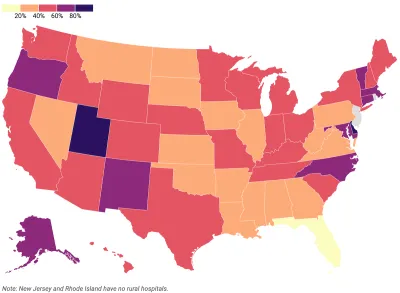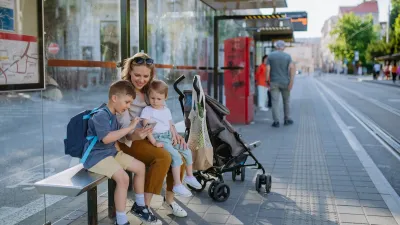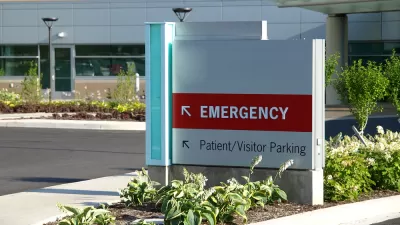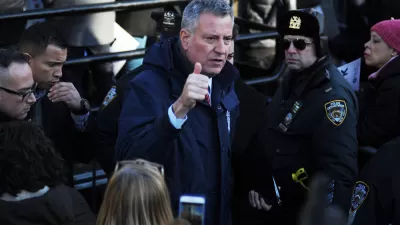In some states, as few as 9% of rural hospitals still deliver babies. As a result, rising pre-term births, no adequate pre-term care and "harrowing" close calls are a growing reality.

Rural hospitals across the United States are struggling to keep their labor and delivery departments open, putting safe birth care more than an hour away for many rural women.
As Anna Claire Vollers explains in the Maine Morning Star, over 100 hospitals in 26 states have closed their L&D departments since 2020, according to a report from the Center for Healthcare Quality & Payment Reform. Today, less than 1,000 rural hospitals offer labor and delivery services.
“Staffing shortages, low Medicaid reimbursement payments and declining birth rates have contributed to the closures. Some states have responded by changing how Medicaid funds are spent, by allowing the opening of freestanding birth centers, or by encouraging urban-based obstetricians to open satellite clinics in rural areas.” This leads to women giving birth in emergency rooms, a lack of adequate prenatal care, and an increase in preterm births.
Because L&D units must have staff on call 24/7, they are “expensive and complicated” to maintain. “In most cases, insurers don’t pay hospitals to maintain that standby capacity; they’re paid per birth. Hospitals cover their losses on obstetrics with revenue they get from more lucrative services.” For rural hospitals with low numbers of births, the cost is sometimes too much to cover.
Proposed cuts to Medicaid could make the situation worse, despite the Trump administration’s other efforts to promote higher birth rates.
FULL STORY: ‘Expensive and complicated’: Most rural hospitals no longer deliver babies

Planetizen Federal Action Tracker
A weekly monitor of how Trump’s orders and actions are impacting planners and planning in America.

Congressman Proposes Bill to Rename DC Metro “Trump Train”
The Make Autorail Great Again Act would withhold federal funding to the system until the Washington Metropolitan Area Transit Authority (WMATA), rebrands as the Washington Metropolitan Authority for Greater Access (WMAGA).

The Simple Legislative Tool Transforming Vacant Downtowns
In California, Michigan and Georgia, an easy win is bringing dollars — and delight — back to city centers.

The States Losing Rural Delivery Rooms at an Alarming Pace
In some states, as few as 9% of rural hospitals still deliver babies. As a result, rising pre-term births, no adequate pre-term care and "harrowing" close calls are a growing reality.

The Small South Asian Republic Going all in on EVs
Thanks to one simple policy change less than five years ago, 65% of new cars in this Himalayan country are now electric.

DC Backpedals on Bike Lane Protection, Swaps Barriers for Paint
Citing aesthetic concerns, the city is removing the concrete barriers and flexposts that once separated Arizona Avenue cyclists from motor vehicles.
Urban Design for Planners 1: Software Tools
This six-course series explores essential urban design concepts using open source software and equips planners with the tools they need to participate fully in the urban design process.
Planning for Universal Design
Learn the tools for implementing Universal Design in planning regulations.
Smith Gee Studio
City of Charlotte
City of Camden Redevelopment Agency
City of Astoria
Transportation Research & Education Center (TREC) at Portland State University
US High Speed Rail Association
City of Camden Redevelopment Agency
Municipality of Princeton (NJ)





























